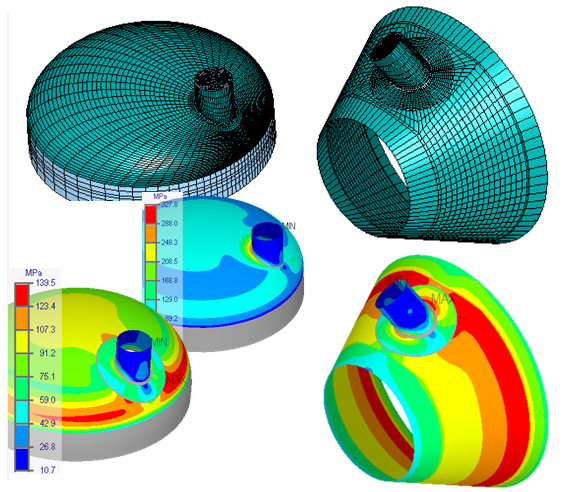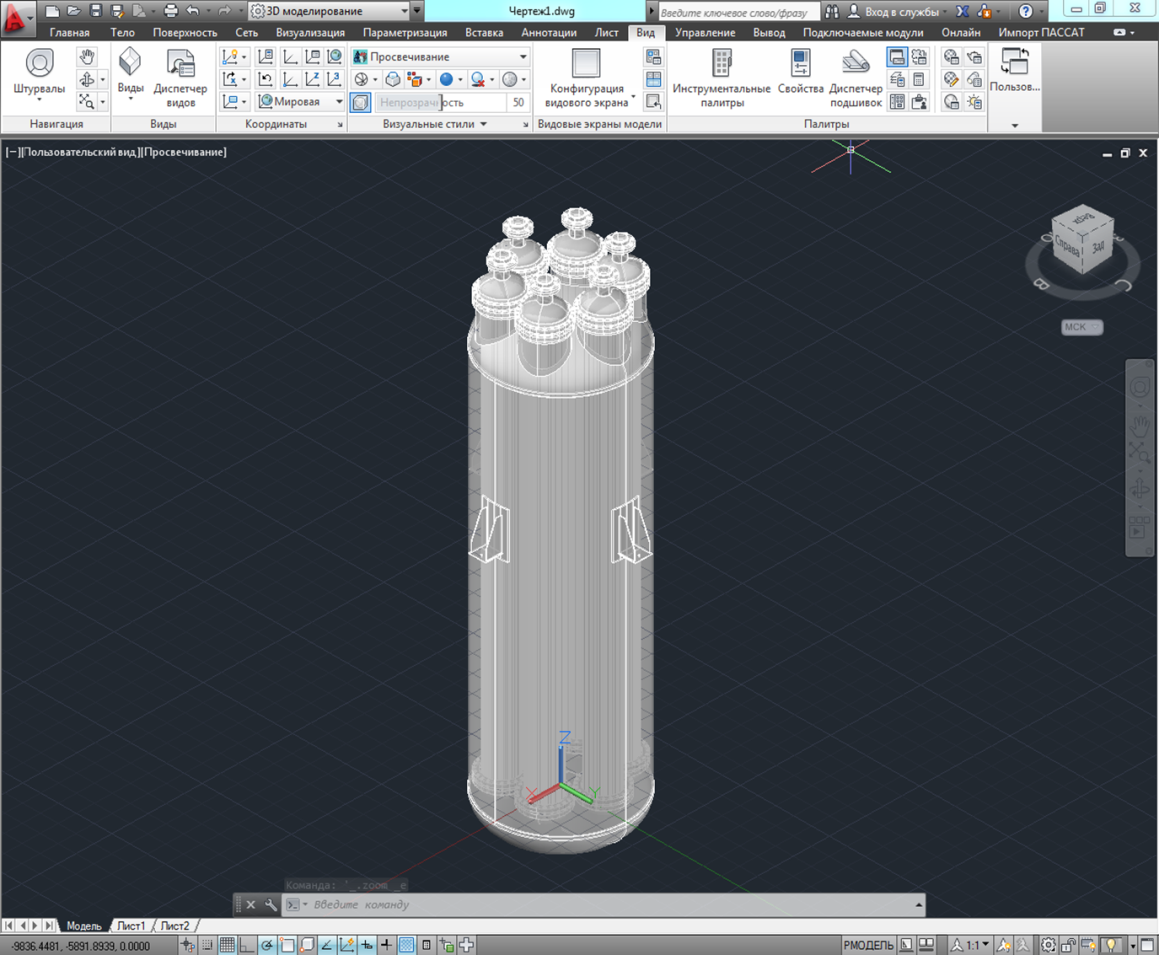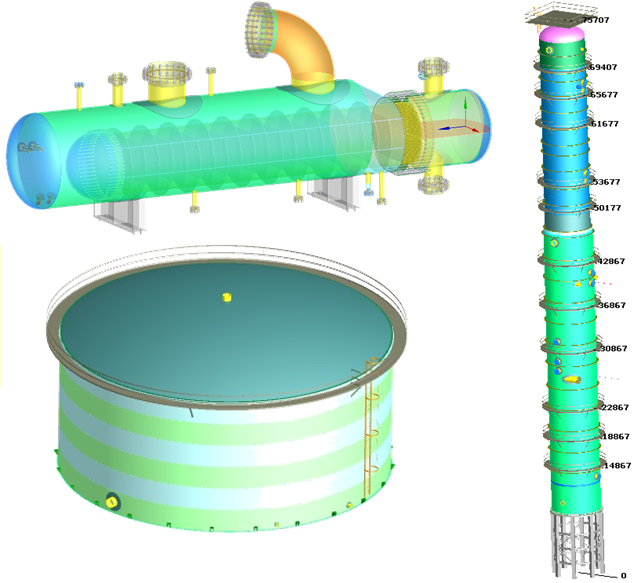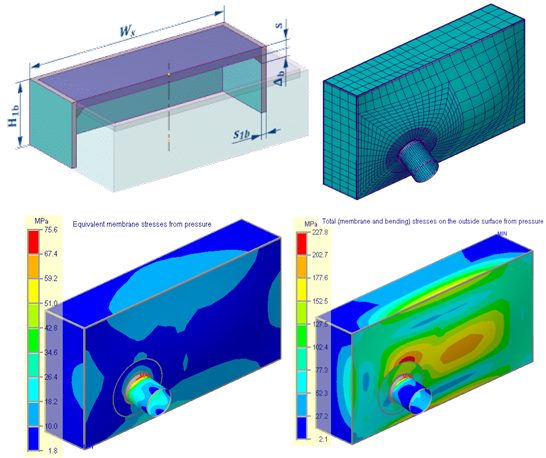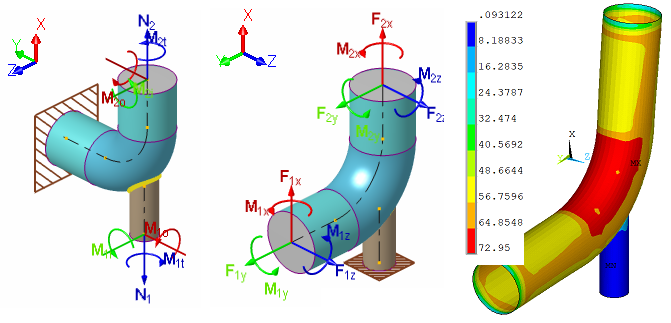Overview
Overview
PASS/EQUIP software provides pressure vessel strength and stability analysis for horizontal and vertical vessels, columns, storage tanks, as well as shell-and-tube, and air cooled heat exchangers under static and seismic loads in order to evaluate bearing strength in operation, test, and assembly states. The software can be used for designing, revamping and testing of vessels, as well as for code compliance certification calculations for power, oil-refining, chemical, petrochemical, natural gas, petroleum, and other related industries. PASS/EQUIP helps to increase reliability and operational safety of equipment for various applications, to improve coordination of the project with regulatory authorities, and to reduce costs and time.
PASS/EQUIP FEM bundle additionally provides stress and flexibility FEM analysis of arbitrary vessel nozzles, including allowable loads calculation.
PASS/EQUIP combines sophisticated calculation capabilities and code compliance analysis with ease-of-use, delivering pressure vessels stress and stability simulation tool to even entry level engineers and designers. Detailed calculation reports produced by the program contain comprehensive information (including all equations, intermediate results, plots of forces and moments) and are ready for delivery to any authorities or equipment certification bodies.
Equipment designers and process and piping engineers of more than 500 EPC and vessel manufacturing companies in Belarus, China, Czech Republic, Estonia, France, Germany, India, Italy, Japan, Kazakhstan, Latvia, Poland, Russia, South Korea, Spain, Ukraine, Uzbekistan and USA now use the software every day for design of different types of vessels, columns, tanks, and heat exchangers.
Due to the large number of users and feedback from specialists of different industries, PASS/EQUIP continues to steadily evolve to meet modern demands. PASS/EQUIP is being permanently verified and cross-tested both vs similar programs and Example Problem Manuals ASME PTB-3-2013 and ASME PTB-4-2012.
PASS/EQUIP has a modern intuitive user interface, detailed documentation and help system, and provides the ultimate in usability, allowing users to focus on equipment design. A user defines an equipment type, geometrical adjectives, material of vessel components, type and allocation of supports, test type, and loading rates. The vast databases for vessel elements and materials are delivered with the program and can be updated by the user.
3D graphic view of equipment geometry allows editing color of separate elements or of the whole model, with internal elements views. Powerful 3D modeling capabilities also support export to various CAD formats, so users can continue working on vessel design in their favorite CAD systems.
PASS/EQUIP does not require a special training and can be used by any mechanical engineer. New users can get pressure vessel analysis results in days rather than months!
Our specialists provide timely technical support.
Powerful capabilities
PASS/EQUIP provides comprehensive structural pressure vessels analysis.
PASS/EQUIP performs strength and stability calculation of horizontal, vertical, and column vessels, and takes into account wind and seismic loads. PASS/EQUIP also calculates strength and stability of shell and tube heat exchangers, including tubesheets, tubes, pass partitions, shells, expansion bellows, expansion boxes, and floating heads. The smart tube grid editor of heat exchanger provides very powerful capabilities of non-standard tubesheets modeling.
The program performs calculation of strength and stability of pressure vessels according to the most popular codes. PASS/EQUIP supports ASME Standards (Sec.VIII div.1 and div.2), European Standards (EN 13445-3), WRC 107(537)/297, GOST Standards (34233.1-12) and others.
The program allows to calculate nozzles in rectangular walls.
Calculation of the skirt supports of columns (cylindrical, conical, composite), weakened by the hole is available.
PASS/Nozzle-FEM allows to calculate pipeline elements – such as tees, bend stanchion, oblique tie-ins.

